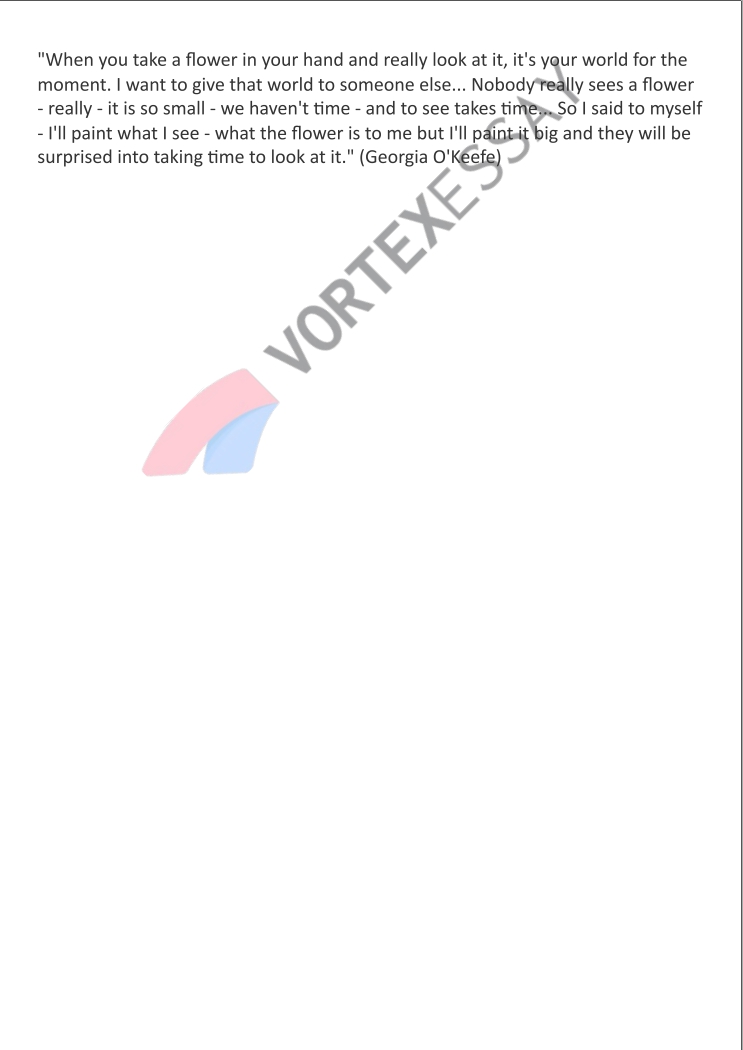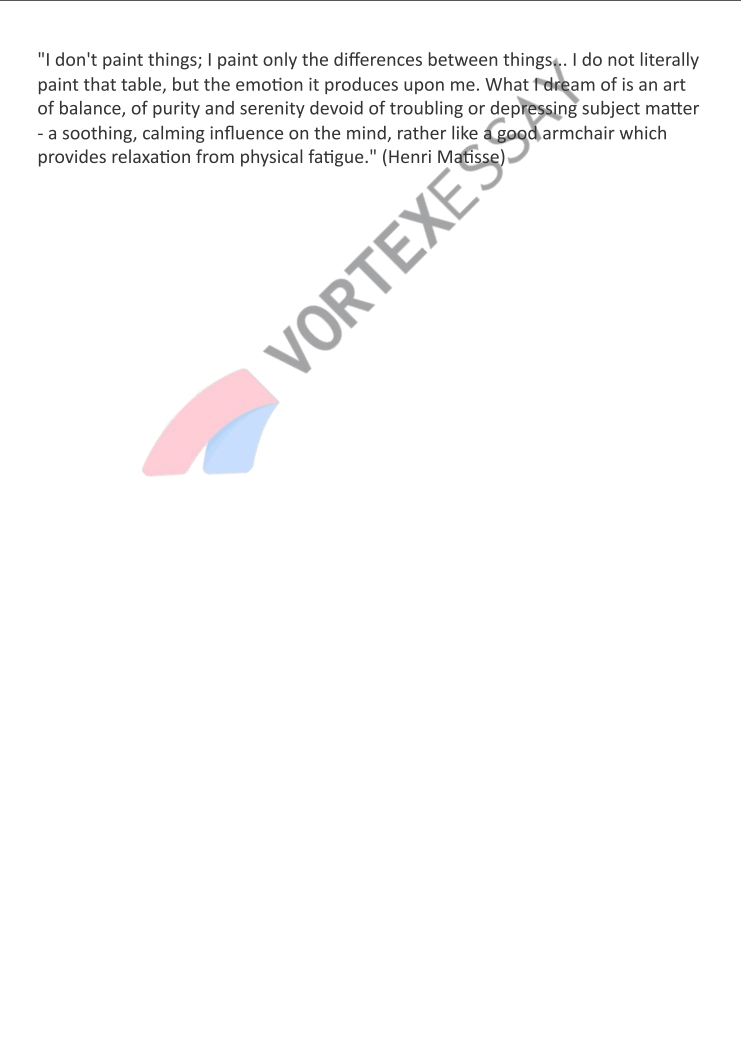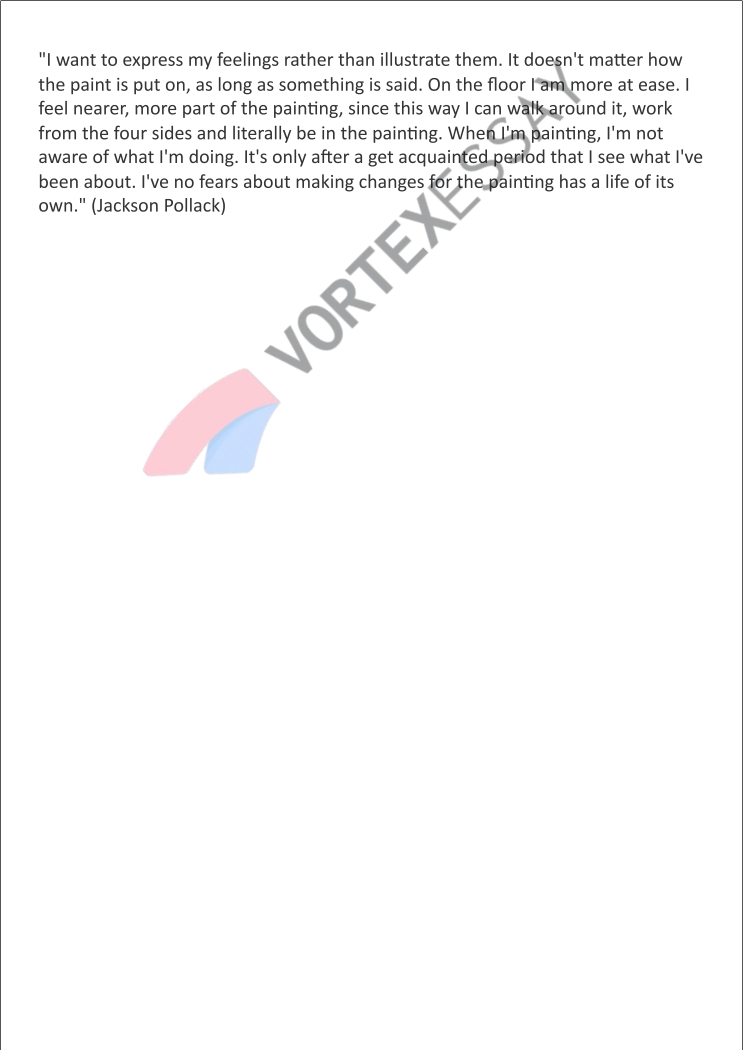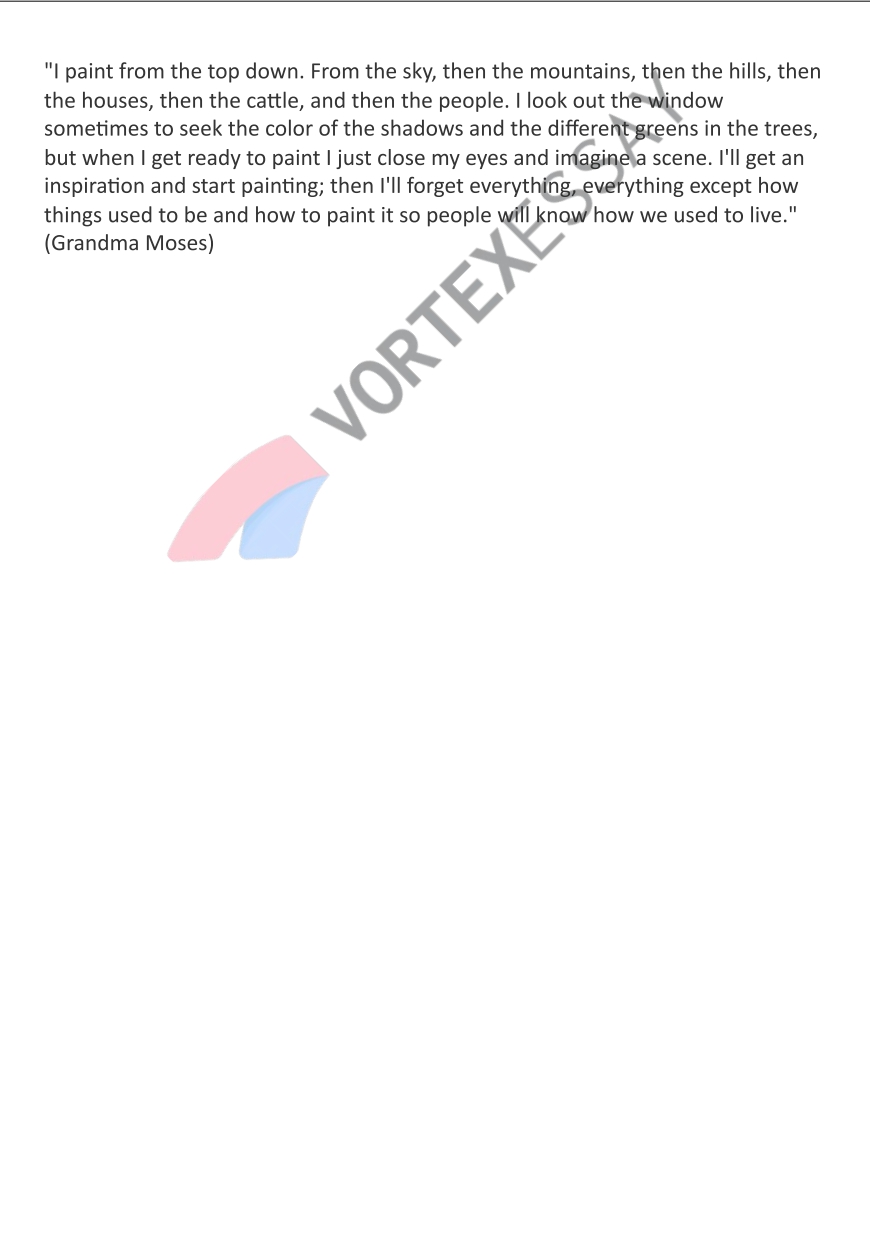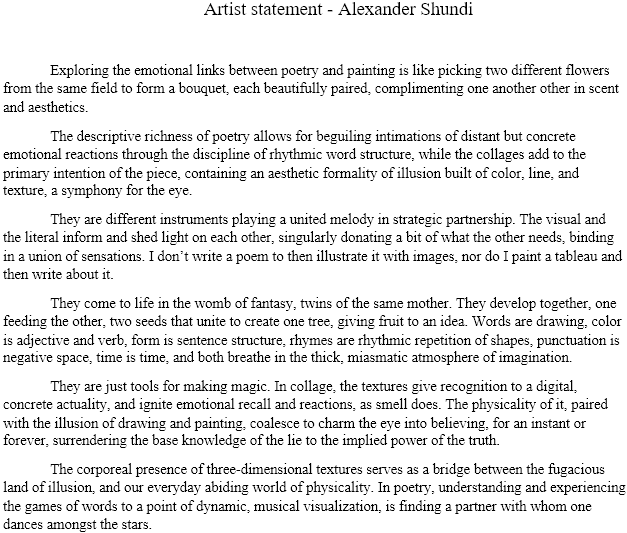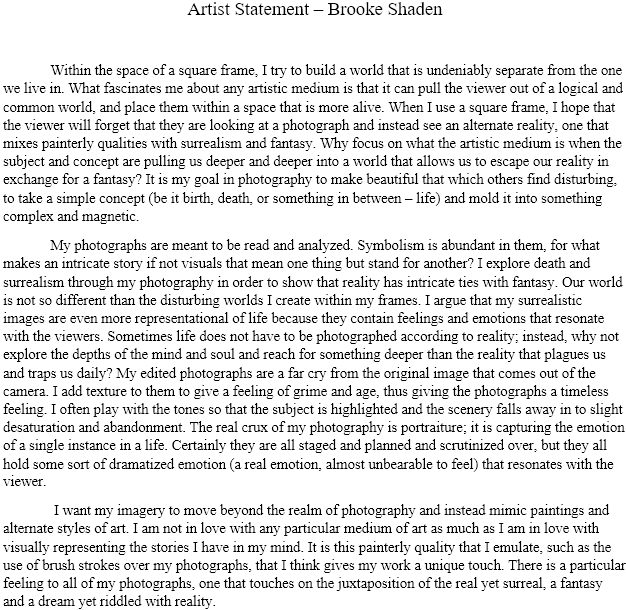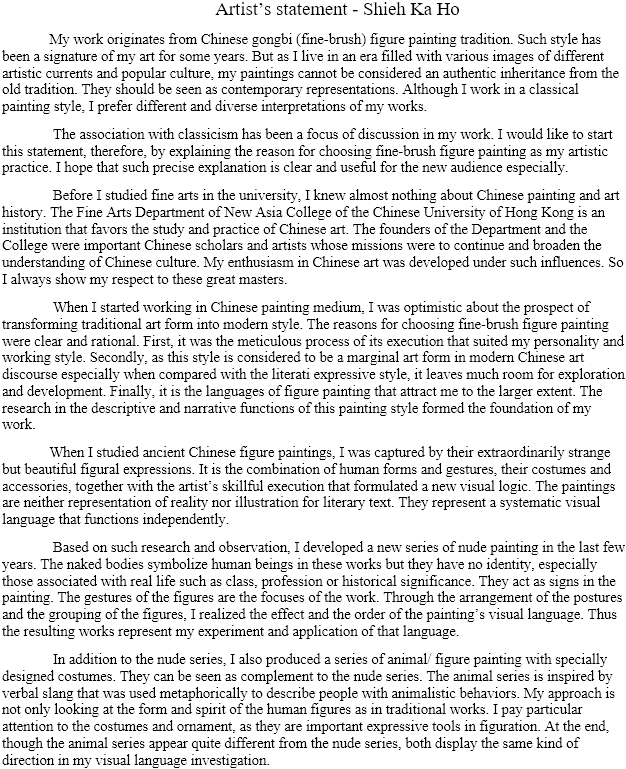Tips from the Art Experts for Writing an Artist Statement
An artist statement is a personal creative credo with indicating facts. It is an introduction to the work, not an instruction on how to look at works or how to analyze them correctly, but what to feel, how to behave or where to stand, in order to understand better.
Ariane Goodwin correctly noted: "Words are just another experience that originates from the world of tactile creativity. Paper and paint are components of our sensual world. Words leave aloof curiosity inside each of us. It happens that two worlds are connected and words seem to tempt our feelings." Here we found the best tips that will reveal the secret of how to write an artist statement.
Make up your writing ideas
Standard artist statement consists of three paragraphs. Writers begin by reviewing ideas with an accompanying explanation of the materials. The work ends with a description of personal philosophy.
An artist statement should give a discussion of your material choice, the flow of context. If it is important for art practice, stand out from the competition with a formal statement. No need to follow the generally accepted opinion and standards – it is important to make your statement not sound the same comparing yourself to other artists. You need to change the model. To do this, use the brainstorming technique, which will help to understand the work better.
Ariane Goodwin gives a bit of good advice: “There always slips an unconscious language in your work. You use it constantly. As soon as you notice, that you start talking or thinking about your work, a connection between the words and your art appears. The secret is that you need to learn to catch yourself on this, and then accurately compose the phrases and statements.”
Outline the keywords from your statement. This will help to make your work structured. Spread out the written concepts and befriend a drawing sheet. Create a diagram regarding the work context. This will help you at the beginning of the writing.
Enable free writing
Start writing a statement freely. Reproduce your ideas on paper all the time. Do not worry about grammar or style. At the start, you may feel insecure, but try to resist this feeling. Indeed, prose may not be perfect right away. Try to exaggerate the required amount of text several times, and then reduce the text, leaving the most successful thoughts.
There may be difficulties in starting the process of writing an artist statement. In this case, it is better to limit yourself in time by setting the timer to 15-20 minutes. Temporary pressure will make you work harder. You can also refer to your memories in order to draw a connection between them and your art.
Avoid jargon
Avoid any jargon. Artists often abuse fancy words. Many of them believe that it decorates their language. However, this often has the opposite effect. Jargon makes the work unsafe in the eyes of the audience. Use academic language. Even with it, you can engage people. Refuse using such a specific language.
Create different versions for different opportunities
The artist statement is a significant paper. This is the so-called cover letter. As a writer, you must change your piece of writing for the application. This implies a reduction or lengthening of the work – it all depends on the requirements of the application. You should also emphasize different aspects of the paper. The reason and the case are important. For example:
- An application for printing without a story about your interest in 17th-century etching should be supplemented with this information;
- The application to the university should contain more academic nuances and language;
- The statement for the gallery should be written in a simple and accessible language.
Do not praise yourself
Pride is a good thing. Nevertheless, you need to know when to stop. To be proud of your work is normal. The main thing is that it does not come to self-esteem. Phrases with a context like "a master of the craft, I will paint as beautifully as anyone else." Of course, you need to sell yourself and increase trust with a potential client. However, such statements only alienate many people.
Keep it short and sweet
It is important to prevent the superficiality of work. The author of the good artist statement should take care of this. Paper will be a creative introduction to your entire work. However, a piece of writing should not resemble its in-depth analysis. The document usually includes one-three paragraphs. The total amount is no more than one page.
You should implement in your statement full answers to the most frequently asked questions about your art. The paper should be short and sweet. It should also be insightful, and not consist of irrelevant facts. Such small details can confuse the reader and lead him away from the point. It is better to stick to the brevity of the presentation. The effectiveness of the language will also be the key in this matter. To make your readers want to see more, make a perfect statement.
Leave It and Come Back
The artist statement will take time. If you want to give a quality result, get ready to work in advance. This will enable planned breaks in the work process. You should not hope that you could instantly generate something brilliant.
Thought Ariane Goodwin says: “Set a time frame and determine the date with yourself. Transform your notes and write your statement. Respect this determination. Do not tolerate vain breaks.”
Indeed, writing an artist statement can be tedious. But in order to relax and be distracted, it is worthwhile to postpone the work for several days and return to it later with a fresh head. Suddenly, you will find that setting up to writing will happen much faster and easier if you give your eyes and brain a break. Give yourself time to think. This will help to uncover ideas more precisely, look at them under a new prism and develop them in further.
Edit
Is your application ready? Do not rush to finish the job. Another equally important stage is its editing. When editing, read your statement and look again at your words and ideas. The statement will help you to think about what is important to you. Discuss the impulse behind the art. Direct your audience on the right side. Ariane Goodwin admitted: “Treat the statement as carefully as you treat your art. All these things are connected”.
It is not necessary to make edits yourself. Ask someone you trust to provide critical feedback. In this case, you can ask for help from a professional editor. It will bring your document to perfection. This is important, as this piece of writing will become the public face of your work. Only such an approach will allow the document to sound believable. This will help to entice the audience and inspire the reader. The audience will become a constant and loyal follower of your art!
Finally! Artist Statement Examples
At last, we found and gathered the greatest artist statement examples. Using these student artist statement examples, you will get acquainted with this format and take some fresh writing ideas!
Student Artist Statement Examples
Short Artist Statement Examples


